The Fourth of July brings people together for fireworks, backyard games, and plenty of grilled food. But there's one mistake that can throw off the whole experience: using the wrong type of heat. Grilling with direct heat vs. indirect heat isn't just about technique—it's about knowing how to cook your food so it turns out the way you want.
Understanding this concept can turn stress into confidence and save your ribs, steaks, and burgers from the guessing game.
Cook Smarter, Not Harder
Grilling works best when the setup matches the cut. Too often, people fire up every burner or pile all the charcoal in one spot, only to end up with burnt edges and raw centers. Different foods need different approaches; your heat source should work for you, not against you.
Before you light the grill this July 4th, know how each method performs:
- Direct heat places food directly over the flame. It's fast, hot, and ideal for quick searing.
- Indirect heat positions food off to the side of the heat source. It allows for slow, even cooking and better internal results.
Mastering both gives you more control—and better flavor.

When to Use Direct Heat
Direct heat is all about intensity. Flames rise directly under the grate, delivering high temperatures that create that crisp sear everyone loves. This method works well for foods that cook quickly and don't need much time to reach a safe internal temperature.
Best foods for direct heat:
- Burgers
- Hot dogs
- Steaks (1 inch or thinner)
- Shrimp
- Kabobs
- Chopped vegetables
These items benefit from high heat and quick turns. You're aiming for caramelized outsides without drying out the inside. Just keep the lid open and tongs handy.
Want more control? The Cowboy Cauldron lineup at Alfresco Backyard Living allows you to raise and lower the grill grate to adjust cooking intensity without lifting the lid or moving your food. This adds flexibility for larger gatherings where timing matters.

Why Indirect Heat Works for Bigger Cuts
Indirect heat gives you a buffer between flame and food. Instead of direct exposure, the heat circulates around the item. This setup mimics a convection oven, which helps with thick or bone-in meats that need time to cook through.
Go indirect for:
- Whole chickens
- Ribs
- Pork shoulders
- Bone-in chops
- Roasts
- Pizza or casseroles
With indirect cooking, you don't have to flip often. Heat and smoke flow evenly, especially with the lid closed. This helps render fat, break down connective tissue, and lock in moisture.
The Cowboy Cauldron shines here, too. Load charcoal or wood to one side of the basin, and place your food on the opposite edge. You'll get convection-style cooking with room to sear when needed.
Use Both for Better Results
Some of the best July 4th meals require a combination of both methods. Direct heat to build flavor, followed by indirect heat to finish, gives the best texture and internal temperature.
Try these combos:
- Reverse sear: Start thick steaks or chops on the cooler side to cook gently, then sear them fast at the end.
- Sear and move: Sear drumsticks or sausages over high heat, then slide them to indirect heat to finish without burning.
- Smoke then crisp: Cook ribs or chicken low and slow first, then crisp the surface briefly over direct heat.
Using both methods doesn't just save your meat—it makes your grill more versatile. You get a perfect crust and a fully cooked interior.
Set Up for Success
Creating separate heat zones is simple but makes all the difference. Whether using a gas grill, a charcoal pit, or a Cowboy Cauldron, you can control the heat with just a few minor changes.
Two-zone setup for gas:
- Turn burners on one side to high.
- Leave the other side off.
- Cook hot and fast, then move to the cool zone to finish.
Two-zone setup for charcoal or cauldron:
- Push coals to one half or side of the basin.
- Leave the other half empty, or use a drip pan.
- Use the covered side for indirect cooking.
This setup gives you the flexibility to switch methods without restarting the fire or moving equipment.
Direct Heat vs Indirect Heat: Quick-Use Chart
Need help deciding which method to use? This chart takes out the guesswork:
|
Food Item |
Direct |
Indirect |
Combo |
|
Burgers |
✅ |
||
|
Steaks (1”) |
✅ |
✅ |
|
|
Whole Chicken |
✅ |
✅ |
|
|
Ribs |
✅ |
✅ |
|
|
Shrimp |
✅ |
||
|
Pork Shoulder |
✅ |
||
|
Pizza (on stone) |
✅ |
Extra Tips to Nail the Cook
- Use a thermometer. Doneness isn't about time—it's about internal temp.
- Let the meat rest before slicing. This keeps juices from spilling out.
- Keep the lid closed during indirect cooking to trap heat and smoke.
- Watch for flare-ups with fatty meats. Have a safe zone ready.
- Clean grates after preheating. Food sticks to dirty surfaces.
These small steps lead to better results with less stress.
Grilling Confidently This July 4th
Understanding the difference between direct and indirect heat turns an average backyard cookout into something memorable. You won't have to wonder if the chicken is cooked or whether your steaks will dry out. You'll know where to place each item and why it belongs there.
Alfresco Backyard Living offers products and advice to make outdoor gatherings easier and more enjoyable. Whether firing up a premium gas grill or using a Cowboy Cauldron for a live-fire setup, your Independence Day cookout starts with mastering the basics.
For more helpful grilling tips and tools, visit alfrescobackyard.com/blogs/news.

























